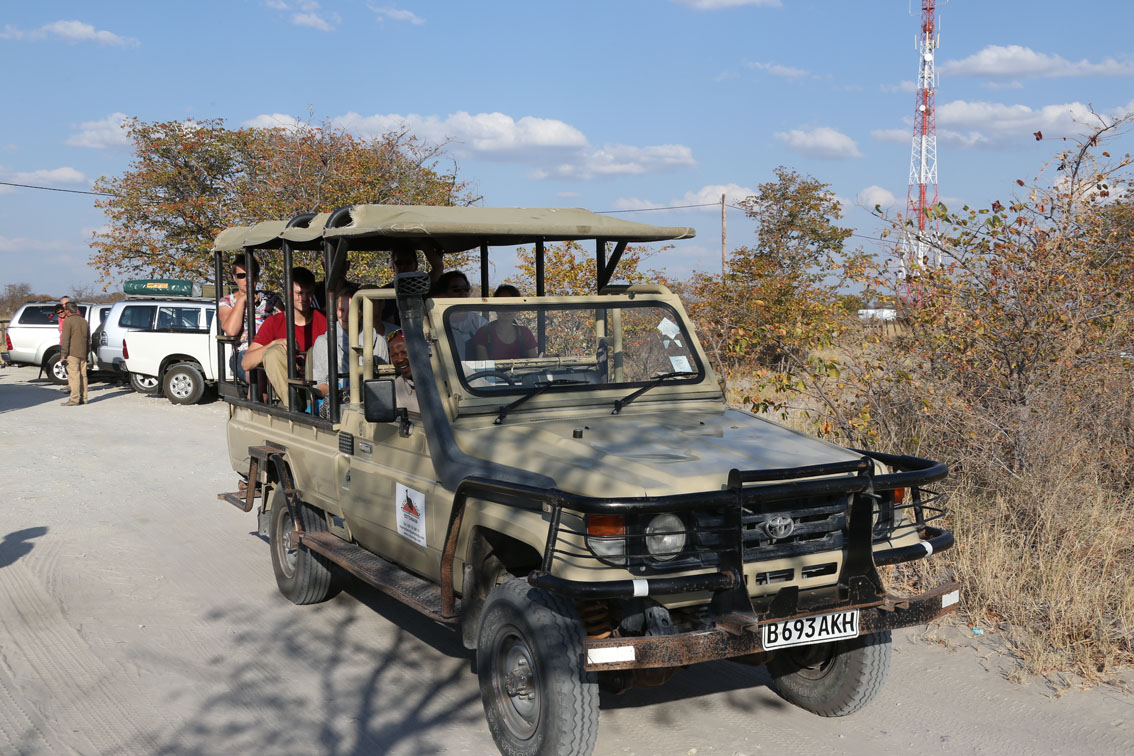Nata Conservation Trust deferred dream
02 Sep 2014
Since it was formed 22 years back as a community based natural resources management entity, the Nata Conservation Trust is yet to benefit communities that border the Nata sanctuary, especially villages of Mmanxotae, Sepako, Nata and Maposa owing to a myriad of challenges it has faced.
The trust, owning a 230 square kilometre area north of the Sua Pan is a community operated wildlife sanctuary that exists to protect the globally famed breeding sites of migratory birds, valuable grasses, pan surfaces, torrential aquatic systems and the Nata River Delta plus the Nata bird sanctuary.
It is located at the mouth of the Nata River Delta at the North-eastern border of the Sua Pan (salt pan) within the larger Makgadikgadi.
The aim of the sanctuary is to conserve the Makgadikgadi Pans and generate employment and income opportunities for the participating villages.
Therefore, the sanctuary is the responsibility of the board of trustees of the Nata conservation trust and these trustees are selected from the four villages.
While community trusts around the country are reaping the rewards for their conservation efforts, the Nata conservation trust has been salivating on what they could have become, had their promising joint venture partnership not collapsed because of a territorial dispute with local farmers who argued that the sanctuary had encroached into their grazing lands.
In 2010, the trust entered into a joint venture partnership with a London based private equity fund to develop the Nata sanctuary.
Hedgerow Fund had committed to inject P30 million towards the construction of two lodges within the sanctuary and the development of the CT5 area.
The two lodges would be subleased to a joint venture partner and the revenue from one of the lodges would go directly to the community in addition to proceeds from the area lease.
Part of the P30 million was to be used to develop the new gate house at the sanctuary and a training centre for community development.
The Trust was also interested in the development of the community area CT 5 which is 60 km from Nata along the Kazungula road.
The Nata sanctuary is famed for the large number of Flamingos, pelicans and other waterbirds which converge on the nutrient rich waters of the pans.
In an interview recently, the Nata conservation trust board chairperson, Mr Kerileng Garebolelwe explained that though it was initially formed to empower and improve the lives of people within the vicinity of the sanctuary, the trust has not yet realised its primary objectives.
“We have experienced many challenges in the process, the first of which was the fact that we were not making any profits initially,” he said.
Consequently, he noted that because the sanctuary was not fenced cattle found their way inside disturbing the natural habitat.
Also, the chairperson explained that some farmers resorted to vandalising the fence which was erected and said the recurring wildfires had a huge impact on the running of the sanctuary.
This, he said, increased the costs of running the trust as they spent more money on the maintenance of the fence.
When Hedgerow came into the scene, Garebolelwe said that they were elated that the much needed investment to make their trust viable had finally arrived but lo and behold, it wasn’t to be.
No sooner had the ink dried after they signed the joint venture agreement with the equity fund, the Nata conservation trust had to defend itself against Semowane farmers bordering the sanctuary who argued that the sanctuary had encroached into their grazing lands.
At the heart of the dispute between the Nata sanctuary and Semowane farmers was where the demarcation line between the two lied and the conflict reached its pinnacle when the sanctuary wanted to erect a fence on the side of the Semowane cattle posts.
The farmers accused the sanctuary officials of extending their area into their grazing lands, while the sanctuary maintained that the area they were fencing had long been allocated to them by the land board.
All along the farmers had been under the impression that the cordon fence that runs through the bird sanctuary served as a demarcation line between the Nata bird sanctuary and their cattle posts.
However, government through the ministry of agriculture later clarified that the cordon fence encroached into the sanctuary to control the movement of livestock between zones, and that they were compelled to erect it in its current position because the sanctuary was not fenced.
Government also informed them that after the fencing of the sanctuary was completed, the cordon fence would be removed.
The board chairperson noted that the equity fund was supposed to contribute funds to the trust. “We did not have funds to fence the whole sanctuary and when we started fencing Semowane farmers protested and went to court,” he said.
What surprised the Trust, Garebolelwe mentioned, was that instead of acting as the arbitrator, the Ngwato Land Board sided with the farmers.
The farmers, he highlighted, lost the case at the High Court but to their surprise, Ngwato Land Board now took the matter for appeal and lost in 2014.
Owing to the delays and legal challenges to the Nata Conservation Trust, he explained that Hedgerow withdrew from the partnership which left them in limbo and meant that they had to look for new partners.
Currently, he explained that the Trust is working with the Botswana Tourism Organisation and the tourism ministry to invite new partners.
The Nata bird sanctuary, he observed, has a lot of potential and they want to promote activities such as bird viewing, sunset viewing, boat cruising, quad bikes and para gliding.
On the recent Makgadikgadi Epic sky diving event which was held over a three day period, he was delighted that it has helped to market the Makgadikgadi Pans and the Nata sanctuary as a tourism destination.
He also asserted that they was need for them to build a lodge inside the sanctuary as most of the tourists lodge outside but come for game drives inside.
However, Garebolelwe explained that they were still faced with challenges such as lack of skilled staff that have been trained on customer service at the sanctuary gate.
Also, lack of finance was hampering the training of youth from surrounding villages as guides. “Bird Life has trained some of the youth but because of lack of opportunities they cannot practice what they leant,” he said.
Should they find an investor soon, the board chairperson was hopeful that, this would create the much needed employment opportunities in the area. ENDS
Source : BOPA
Author : Puso Kedidimetse
Location : FRANCISTOWN
Event : Feature
Date : 02 Sep 2014









